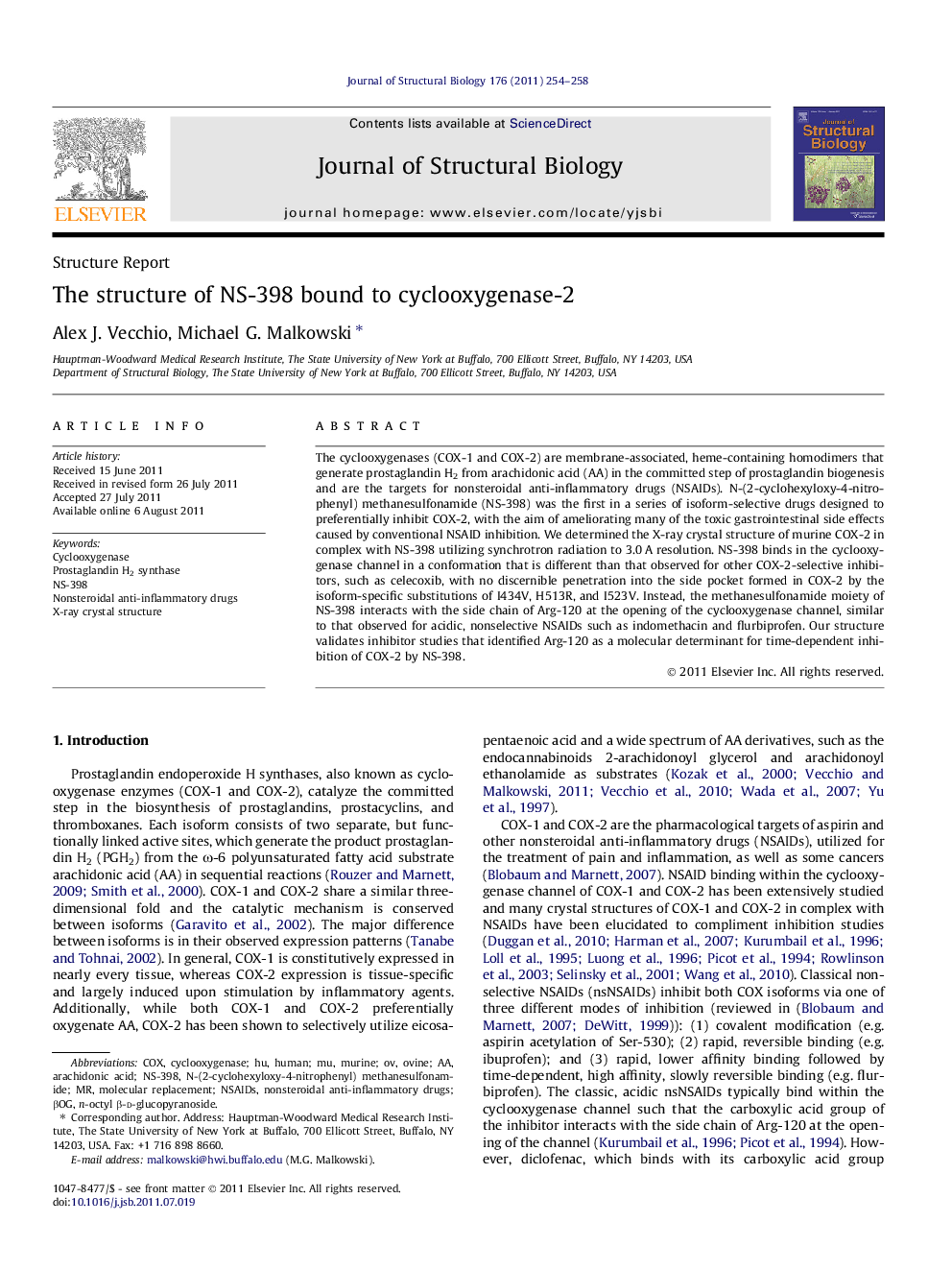| Article ID | Journal | Published Year | Pages | File Type |
|---|---|---|---|---|
| 2828697 | Journal of Structural Biology | 2011 | 5 Pages |
The cyclooxygenases (COX-1 and COX-2) are membrane-associated, heme-containing homodimers that generate prostaglandin H2 from arachidonic acid (AA) in the committed step of prostaglandin biogenesis and are the targets for nonsteroidal anti-inflammatory drugs (NSAIDs). N-(2-cyclohexyloxy-4-nitrophenyl) methanesulfonamide (NS-398) was the first in a series of isoform-selective drugs designed to preferentially inhibit COX-2, with the aim of ameliorating many of the toxic gastrointestinal side effects caused by conventional NSAID inhibition. We determined the X-ray crystal structure of murine COX-2 in complex with NS-398 utilizing synchrotron radiation to 3.0 A resolution. NS-398 binds in the cyclooxygenase channel in a conformation that is different than that observed for other COX-2-selective inhibitors, such as celecoxib, with no discernible penetration into the side pocket formed in COX-2 by the isoform-specific substitutions of I434V, H513R, and I523V. Instead, the methanesulfonamide moiety of NS-398 interacts with the side chain of Arg-120 at the opening of the cyclooxygenase channel, similar to that observed for acidic, nonselective NSAIDs such as indomethacin and flurbiprofen. Our structure validates inhibitor studies that identified Arg-120 as a molecular determinant for time-dependent inhibition of COX-2 by NS-398.
